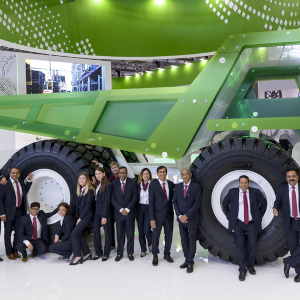In celebration of International Women’s Day this month, we’re exploring the triumphs and tribulations faced by women in agriculture throughout history - and beyond. 2023 is set to be a year for more progressive change, as the world is awakening to issues of gender inequality still plaguing industries far and wide. Here’s to female farmers breaking more boundaries this year!
In celebration of International Women’s Day this month, we’re going to be exploring the triumphs and tribulations faced by women in agriculture throughout history - and beyond. 2023 is set to be a year for more progressive change, as the world is awakening to issues of gender inequality still plaguing industries far and wide. The agricultural sector is no exception: here’s to female farmers breaking more boundaries this year!
Women In Agriculture: A Brief History
It is no secret that agriculture is widely considered to be a male-dominated industry. However, even back in the early 19th century, women provided a helping hand in maintaining crops and fields. When war struck in 1939, millions of farming jobs - and other typically “male” jobs - were taken up by women. Whilst their husbands, fathers and sons were overseas, women temporarily took center stage in a number of male-dominated industries: from agriculture to engineering, to factory work. They may have resumed their stereotypical societal roles thereafter - yet women were certainly not destined to be men’s understudies forever!
After a few decades spent waiting in the wings, the 1990s saw a surge in female farmer power! The number of women in agriculture has continued to increase over the last few decades: women now make up almost half of the global agricultural labor force. Talk about progress!
Daily Challenges and Discrimination
However, there is still much work to be done. Whilst it is important to celebrate progress, we also must be aware of the progress that has yet to be made to achieve true equality.
Want to hear something painfully ironic? Female farmers do, indeed, make up half of the industry - and almost half of these women face discrimination. Meanwhile, the vast majority experience daily challenges on the farm as a direct result of their gender: a factor which is far beyond their control. Many female farmers lead the latest innovations in the industry, yet are still suffering due to inequality in the workplace. One thing’s for certain: something needs to change.
One of the key issues highlighted by many experts is a lack of recognition. If we rewind back to the 1940s, female farmers were practically absent from historical images of life on the farm. This telling gap in our history has inspired organizations such as The Female Farmer Project to document the work of women in agriculture. But more on that later!
There are many challenges which female farmers face on a daily basis, unlike their male counterparts. Most of these issues revolve around inaccessibility: women in agriculture have less access to land, quality working conditions, financial support, education and training, and overall equal treatment. For example, less than 20% of the world’s landholders are women, whilst shockingly, in some corners of the globe, women are disempowered by law, and are unable to even legally own land. However, women with rights to land ownership are still disenfranchised: on average, female-run farms produce 20 - 30% less than farms run by men. Why? Statistics show that this has nothing to do with the level of graft, yet everything to do with discrimination in the industry.
Female Farmers: Industry Innovators
Despite the obstacles they face, women in agriculture are making waves. As previously mentioned, The Female Farmer Project is a fantastic example of women empowering other women in the industry. It is a multimedia documentary project, which chronicles the rise of women in agriculture worldwide. Founder Audra Mulkern has paved the way for other women in agriculture, providing a platform for female farmers across the globe - ensuring that they won’t be forgotten in the history books. Their achievements are documented through photographic portraits, a podcast, a documentary film and a host of personal essays and real life stories. Take a look here!
What’s more, all the latest industry-wide updates can be found at ‘Women in Ag’ conferences across the US throughout the year. These events build a community of women in agriculture, whilst simultaneously allowing them to share industry insights, and elevate each other’s work.
According to the UN WCMC, “women are agents of transformative change”. We wholeheartedly agree with this sentiment - in addition to their claims that, if rural women had the same access to agricultural resources as men, it could result in an increase in food production, feeding another 150 million people. As we grapple with the climate crisis paired with an ever-growing population, this is more crucial than ever.
How Can You Help?
The UN’s Food and Agriculture Organization (FAO) is continuously scaling up their work on gender equality: they are “committed to close the gender gap in agriculture and empower rural women”. Meanwhile, BKT’s ‘Campus to Corporate’ is in the process of planning outreach initiatives to engage more women interns and employees in the coming years, to ensure equal opportunities for all.
However, you don’t need to be the leader of a global company to help! Anyone can make a difference by simply educating themselves on current issues, and showing support. If you’re unsure of where to start, there are a number of charities which specifically support female farmers - so get involved!
To learn more about women in agriculture watch our ‘Women In Agriculture’ Global Trends episode here. Featuring guest speakers Svetla Garbeshkova, Audra Mulkern, Rekha Mehra and Lucia Salmaso.






.jpg)